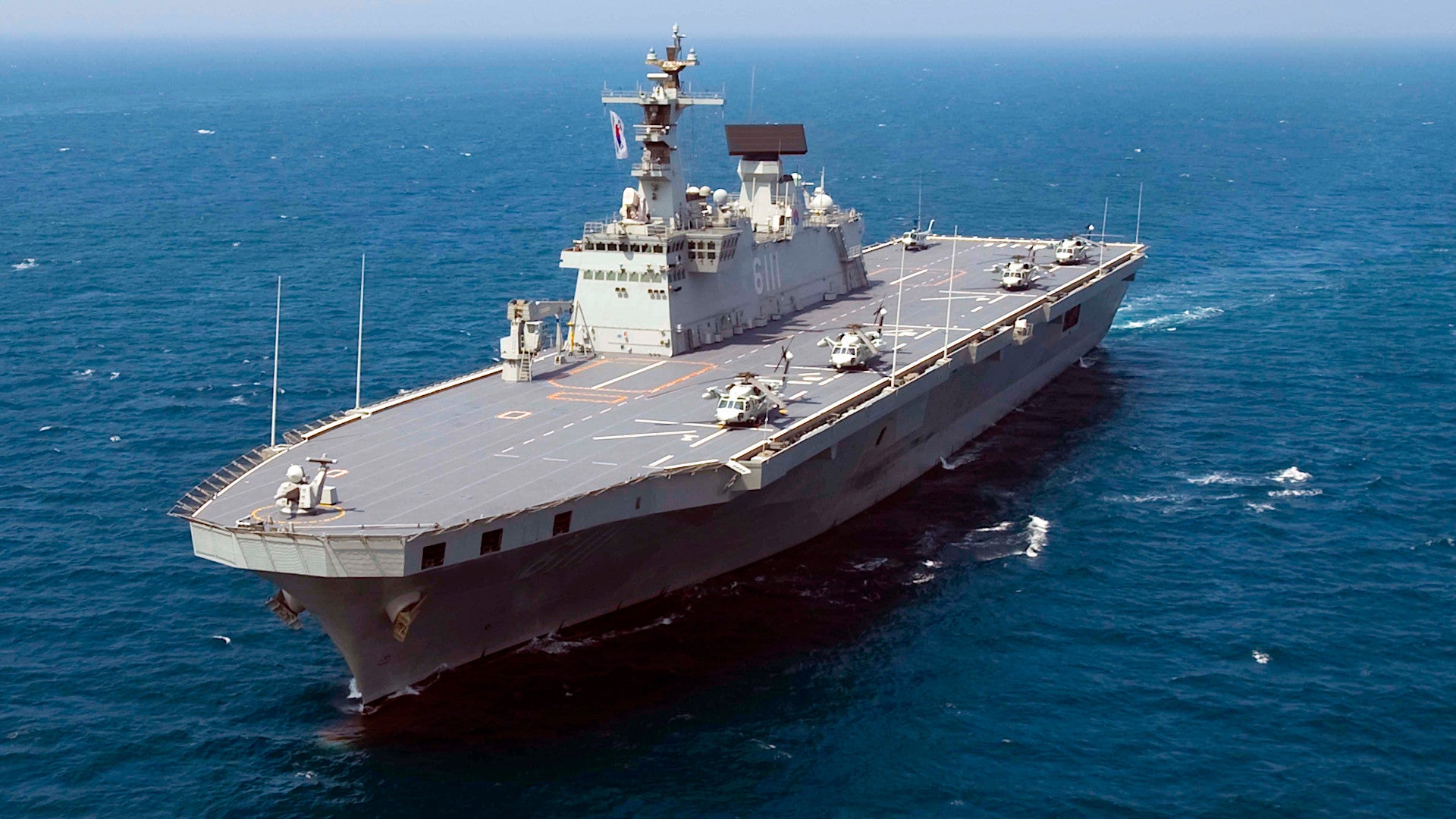South Korea is in the early stages of developing a new, larger amphibious assault ship that could support short-takeoff and vertical-landing combat aircraft and plan to launch the ship toward the latter end of the next decade. For more than a year, the South Koreans have been considering a purchase of up to 20 F-35B Joint Strike Fighters, which would likely form the core of the air wing onboard this future vessel.
South Korea’s decision to acquire the ship, presently known only as Landing Platform Helicopter-II, or LPH-II, reportedly came during a meeting that South Korean Army General Park Han Ki, the Chairman of the country’s Joint Chiefs of Staff, held on July 12, 2019. LPH-II is a reference to the ship being a successor South Korean Navy’s two Dokdo class LPHs.
“The plan of building the LPH-II ship has been included in a long-term force buildup plan,” an unnamed spokesman for South Korea’s Joint Chiefs of Staff told Defense News. “Once a preliminary research is completed within a couple of years, the shipbuilding plan is expected to be included in the midterm acquisition list.”
At present, the LPH-II requirements call for a ship that displaces around 30,000 tons, which is twice the displacement of the Dokdos, but still smaller than the U.S. Navy’s Wasp or America class amphibious assault ships. The LPH-II will also be around 820 feet long. If these specifications remain true, the LPH-II will be closer size-wise to Japan’s Izumo class “helicopter destroyers,” Australia’s Canberra class amphibious ships, or various European light carrier and amphibious assault ship designs.
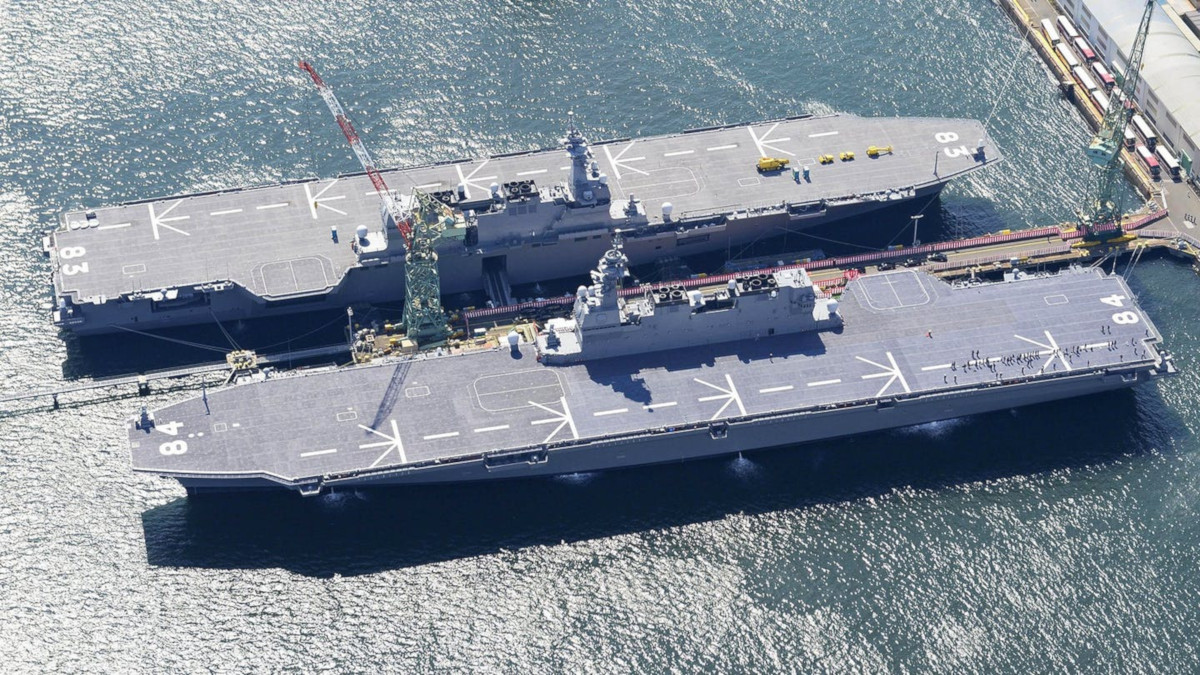
South Korea’s planned LPH-II will still be an amphibious assault ship and will have space for up to 3,000 troops and 20 armored vehicles, according to Defense News. It seems very probable that it will have a well deck for launching amphibious vehicles and landing craft, as is the case with the Dokdos. But it will also feature a significantly larger flight deck compared to the Dokdos and a ski jump to increase the takeoff performance and provide an additional margin of safety for short-takeoff aircraft, such as the F-35B. The LPH-II could be able to carry as many as 16 of those jets in its final configuration.
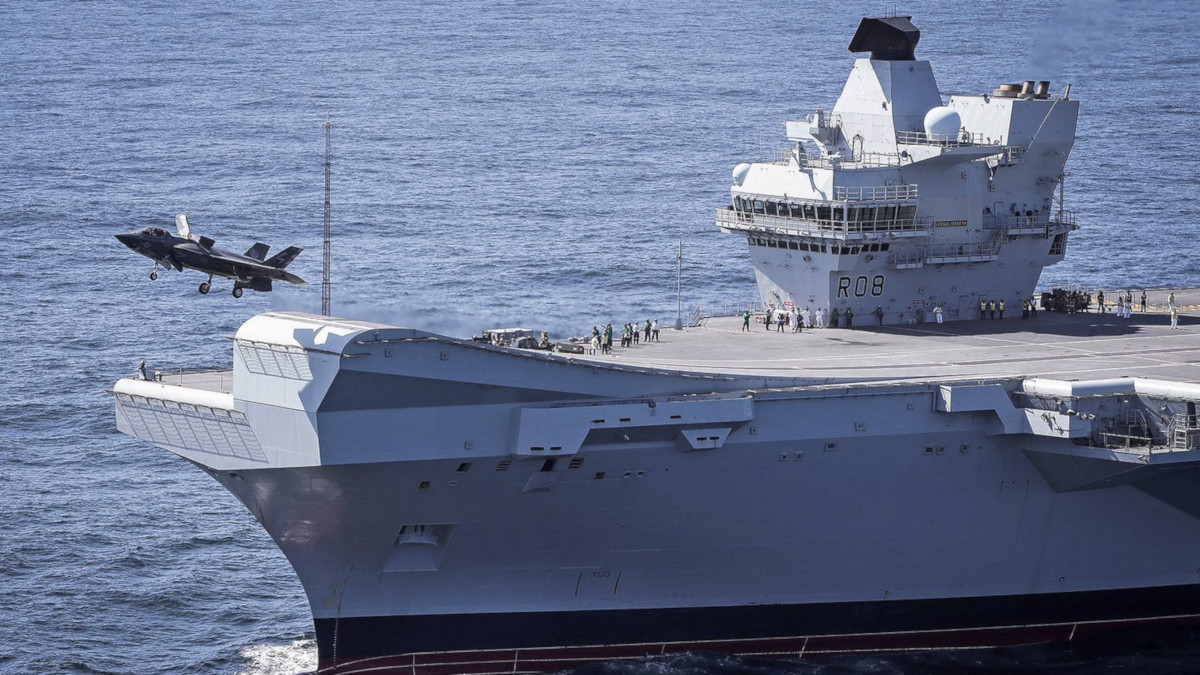
The emergence of the LPH-II plan is not particularly surprising. Starting in late 2017, there were reports that South Korea was eying a relatively small purchase of F-35Bs, around 20 aircraft in total, with the expectation that these would operate from the Dokdos.
However, those ships are relatively small for this role and it wasn’t immediately apparent how, or if, they could truly conduct sustained F-35B operations, even with a major refit. As it stands now, the Dokdos are configured to carry a complement of around 10 medium to medium-lift helicopters, such as the South Korean Navy’s UH-60P Black Hawks or Westland Lynxes. The first-in-class Dokdo also reportedly has deck space to accommodate one V-22 Osprey tilt-rotor, though South Korea has not agreed to buy these aircraft yet.
The second Dokdo class ship, Marado, which is undergoing builders trials now ahead of an expected commissioning date in 2020, has a slightly larger flight deck that can handle two V-22s simultaneously. It is worth noting that Marado also has a new Elbit fixed-panel 3D surveillance radar in place of the rotating Thales SMART 3D radar found on Dokdo.
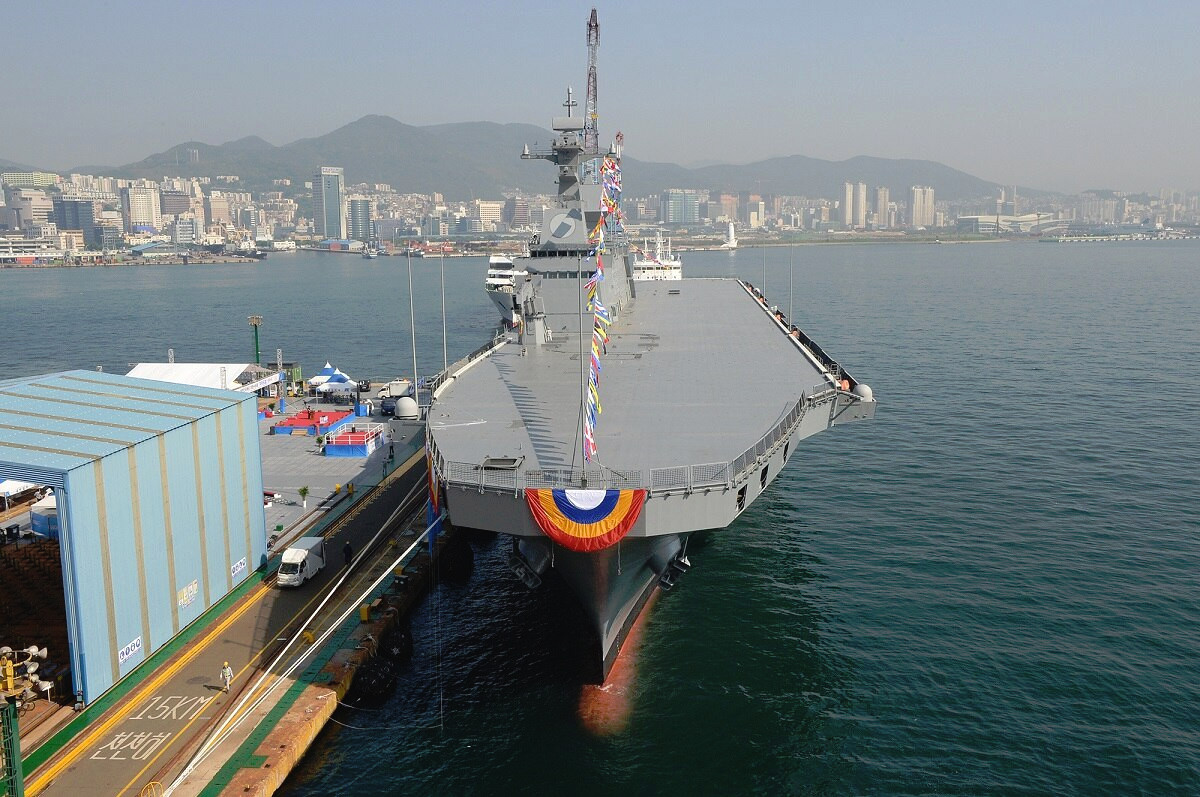
Even with the larger flight deck, Marado‘s ability to support short takeoff and vertical landing capable fixed-wing combat jets appears to remain limited. There is no word on whether the deck, as well as other infrastructure on the ship, has received the kind of hardening to prevent the F-35B’s powerful and extremely hot exhaust from damaging it, especially during vertical landings. Japan is also in the process of modifying its Izumo class ships to carry the B model Joint Strike Fighter, but also recently acknowledged that these it had designed these ships from the outset to support fixed-wing combat jets. This will help simplify the conversion process in that case.

Beyond the need for an expanded and reinforced flight deck, either one of the Dokdo class ships would also likely need additional modifications to ensure it meets other operational and logistics demands, including aviation fuel capacity and space to perform significant maintenance on the aircraft while underway. The U.S. Navy and Marine Corps are contending with similar issues as they develop “Lightning Carrier” concepts of operation for Wasp and America class ships, something The War Zone
has examined in detail, even though these ships are substantially larger than the Dokdos.
So, if South Korea does intend to purchase the fleet of F-35Bs, it would almost demand the construction of a bigger ship, such as the LPH-II, to support them. An unnamed source told Defense News that South Korean officials are still exploring their options with regard the short takeoff and vertical landing variant of the Joint Strike Fighter. The South Korean Air Force has already taken the delivery of two conventional F-35As out of a planned total fleet of 60 aircraft.
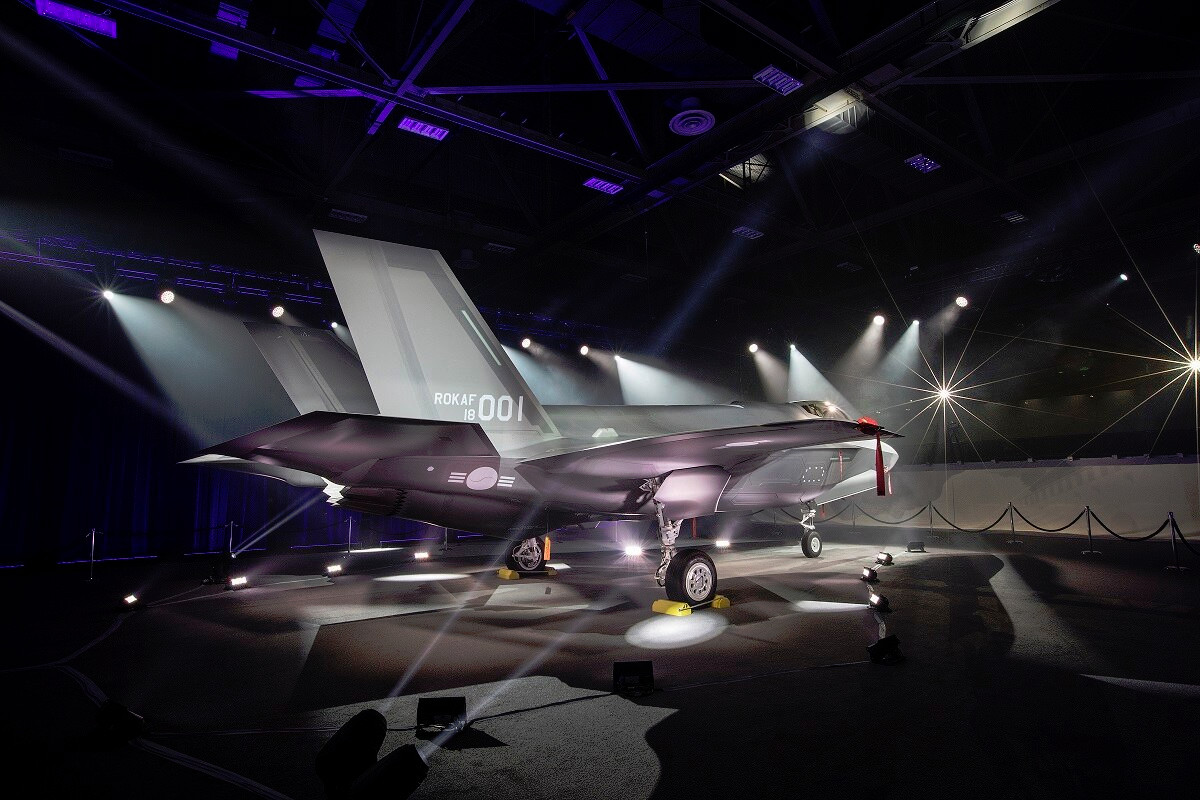
“A pilot study on the purchase of F-35Bs is being conducted by a state-funded research institute,” Defense News‘ source said. “The study results are to be released as early as September.”
The two options reportedly under consideration are the substitution of some portion of the existing F-35A order with F-35Bs or just buying 20 B models on top of the 60 A variants. South Korea would have few, if any alternatives avenues to acquire short takeoff and vertical landing capable combat jets if it were to decide against buying F-35Bs. The only other readily available option would be to investigate buying a portion of the U.S. Marine Corps’ AV-8B Harrier fleet that will be slowly phased out over the coming decade.
Regardless of how exactly plans for the LPH-II and the F-35B purchase evolve, South Korea has a clear demand for a more robust carrier-like capability. Most pressingly, in any potential conflict with North Korea, South Korean airbases and commercial airports would be prime targets for North Korean ballistic missiles, as well as special operations forces. Runway independent combat jets such as the F-35B, able to operate from the deck of ships such as the LPH-II, as well as dispersed and austere sites on land, including highways and reinforced concrete strips, could be an essential part of any subsequent combat operations.

Underscoring this reality, yesterday, news broke that North Korea launched two unspecified short-range ballistic missiles. Based on the information available, it appeared that these might have been a design North Korea first tested in May 2019, which is similar externally to the Russian Iskander and that the U.S. government now refers to as the KN-23.
South Korea’s National Security Council subsequently said that its initial assessment was that two weapons to have been “a new kind of short-range ballistic missile,” but that it was a final assessment would not come until a more in-depth analysis of the information in cooperation with the United States. One of the missiles flew almost 430 miles, which would put much of South Korea within striking distance, and any new designs would only add to the existing and increasingly expansive North Korean ballistic missile arsenal.
Beyond North Korea, the geopolitical environment in Northeast Asia, and the Pacific region as a whole, along with South Korea’s place in it, is also evolving. Seoul has increased regional security concerns beyond the Peninsula, including with regards to various territorial disputes involving both China and Japan. The LPH-II could help the South Koreans project more power regionally, including as part of larger coalitions with allies such as the United States, both with its embarked aircraft and amphibious assault forces.
This could be particularly important as the Chinese, as well as the Russians, have been stepping up both air and naval activity in the region themselves. China, in particular, is in the process of dramatically expanding its naval capabilities, too, including the construction of multiple aircraft carriers and its own new class of 40,000-ton displacement amphibious assault ships, known as the Type 075.
Just days ago, an unprecedented aerial incident involving South Korea and Russia occurred that underlined the evolving geopolitical character of the region. South Korean fighter jets reportedly fired hundreds of 20mm cannon shells toward a Russian A-50 Mainstay airborne early warning and control aircraft, along with flares, as warning shots after that aircraft flew into the airspace above a contested group of islets in the Sea of Japan. The Japanese government also claims ownership of these islets.
Russia, which was conducting its first-ever joint long-distance bomber patrol with China at the time, initially disputed South Korea’s version of events and denied that the A-50 flew into South Korean national airspace above the islets. The Russian Ministry of Defense also said that South Korean jets did not fire any warning shots at the Mainstay or at its Tu-95MS Bear bombers that were also in the same general area. However, South Korean authorities subsequently said that the Kremlin apologized for the incident, saying any intrusion was likely the product of a technical problem with the plane’s navigation equipment.
So, while South Korea’s plans for the LPH-II are still years away from coming to fruition, between North Korea and the country’s other emerging regional security demands, it makes perfect sense that the country is getting the process started now so that it will have this important capability available as soon as possible.
Contact the author: joe@thedrive.com
